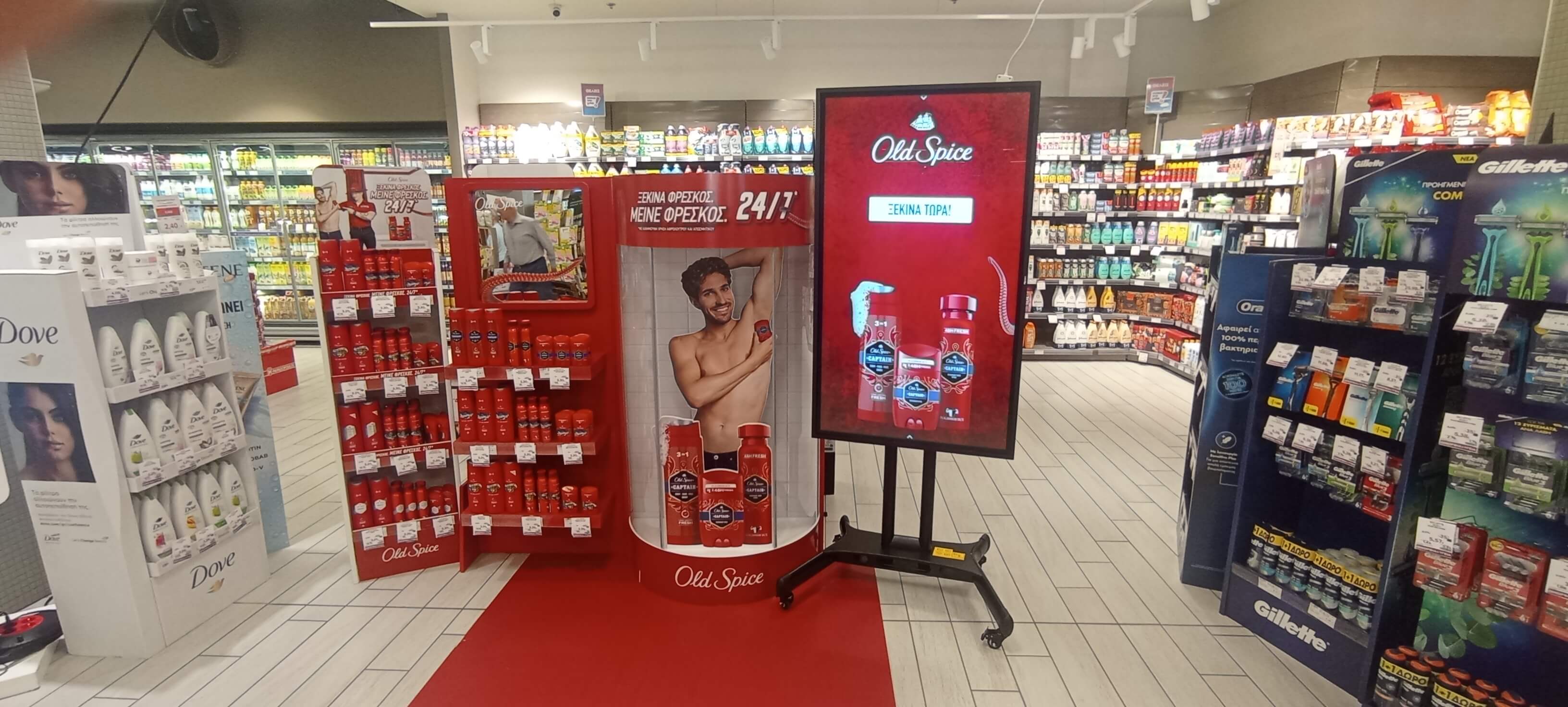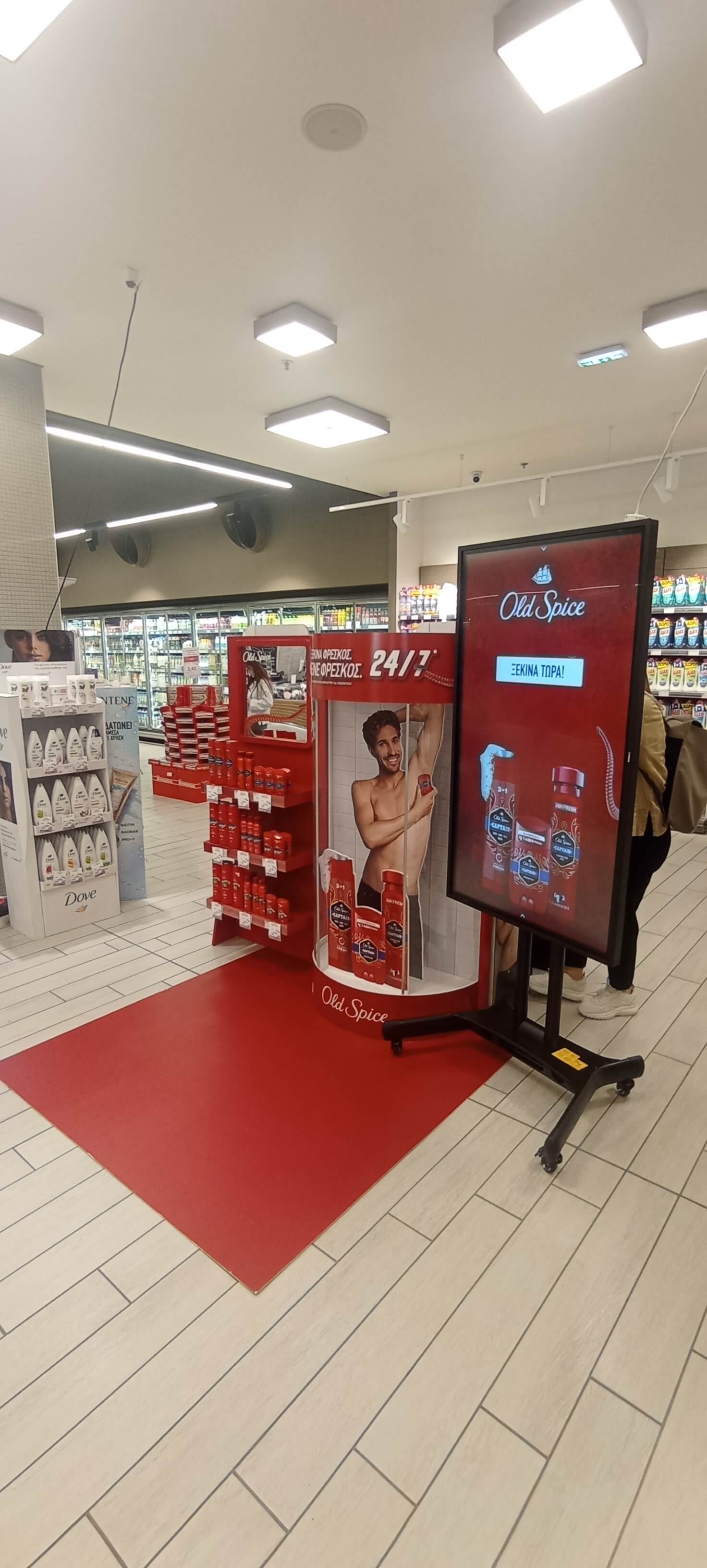
Old Spice wanted an in-store activation that would do more than decorate a retail aisle. They needed something that could attract attention, encourage customers to interact, and create a moment of brand connection strong enough to influence both loyalty and future purchasing. The solution was an interactive kiosk experience placed directly in high-traffic retail environments, designed to merge gamification with data-driven engagement.
Our studio was commissioned to lead the UI/UX direction, art direction, and structural design of the entire customer journey. The goal was simple: create an experience that felt fun, premium, and unmistakably Old Spice, while also providing a practical route for gathering customer insights such as contact details and preferences for later retargeting.
The broader strategy treated the kiosk as both an entertainment touchpoint and a marketing engine. Retail environments are noisy, and customers typically have little patience for anything that feels like a chore. We approached the experience with this in mind, building a flow that rewarded curiosity and framed the entire interaction as a light-hearted game. The more enjoyable the journey, the more likely customers would be to complete it, claim their reward, and willingly provide data that could support future marketing activity.
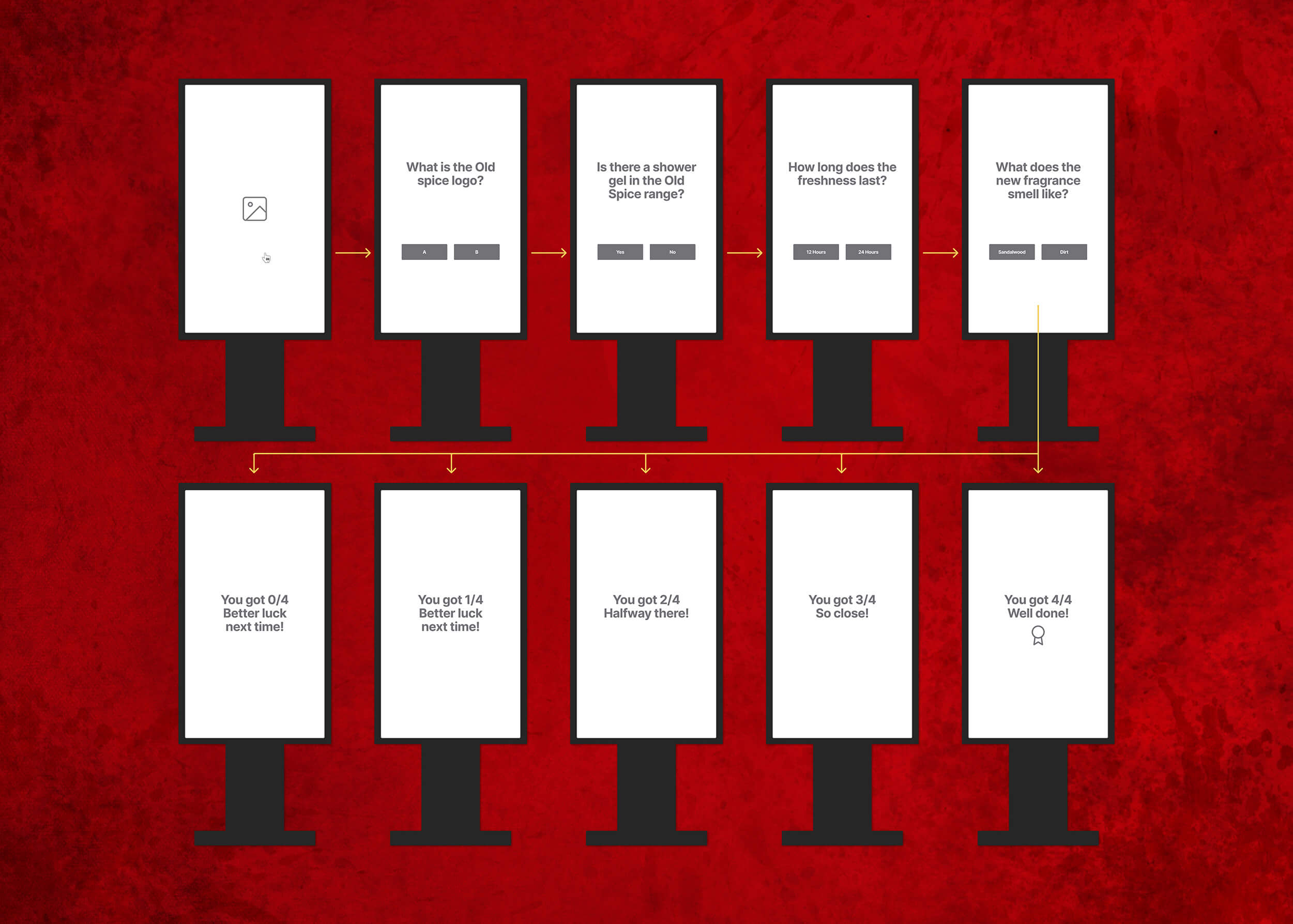

We began by mapping the entire experience from first glance to final reward. This included wireframing the complete user flow, prototyping the interactions, and establishing a visual direction that aligned with Old Spice’s identity while elevating it for digital use. The project required us to interpret brand guidelines that were originally designed for packaging and print, then rework them into a UI system that would feel cohesive, intuitive, and engaging on a touchscreen kiosk.
The core mechanic was a ten-question quiz built around Old Spice trivia and related themes. Each question needed to be visually bold, quick to understand, and satisfying to answer. We designed a responsive layout with large hit areas, rapid transitions, and animated feedback states that kept the experience moving at a steady pace. The navigation was intentionally simple: minimal steps, clear prompts, and a user journey that required no explanation from staff.
Prototyping played a significant role in the project. We created interactive prototypes that allowed the client and stakeholders to test the flow early, request adjustments, and ensure the tone of the experience matched their expectations. This phase also helped refine the reward mechanic, which involved presenting participants with an Old Spice product incentive, voucher, or similar promotional reward. Since the exact reward was still being finalised during production, we designed this screen flexibly so it could adapt to whichever incentive the brand chose to implement.
Once the experience was approved, we produced all final visual assets for handover to the development team. This included screen designs, UI components, interaction notes, and export-ready artwork. Alongside the kiosk work, we assembled presentation materials for stakeholder meetings, outlining the strategy, flow, aesthetic, and rationale behind each interaction.
The campaign eventually rolled out in retail stores as part of a broader promotional initiative, which included physical POS elements, shelving displays, and a themed installation. The interactive kiosk became the centrepiece of the activation, giving customers a reason to stop, engage, and spend time with the brand in a way that felt playful and memorable.
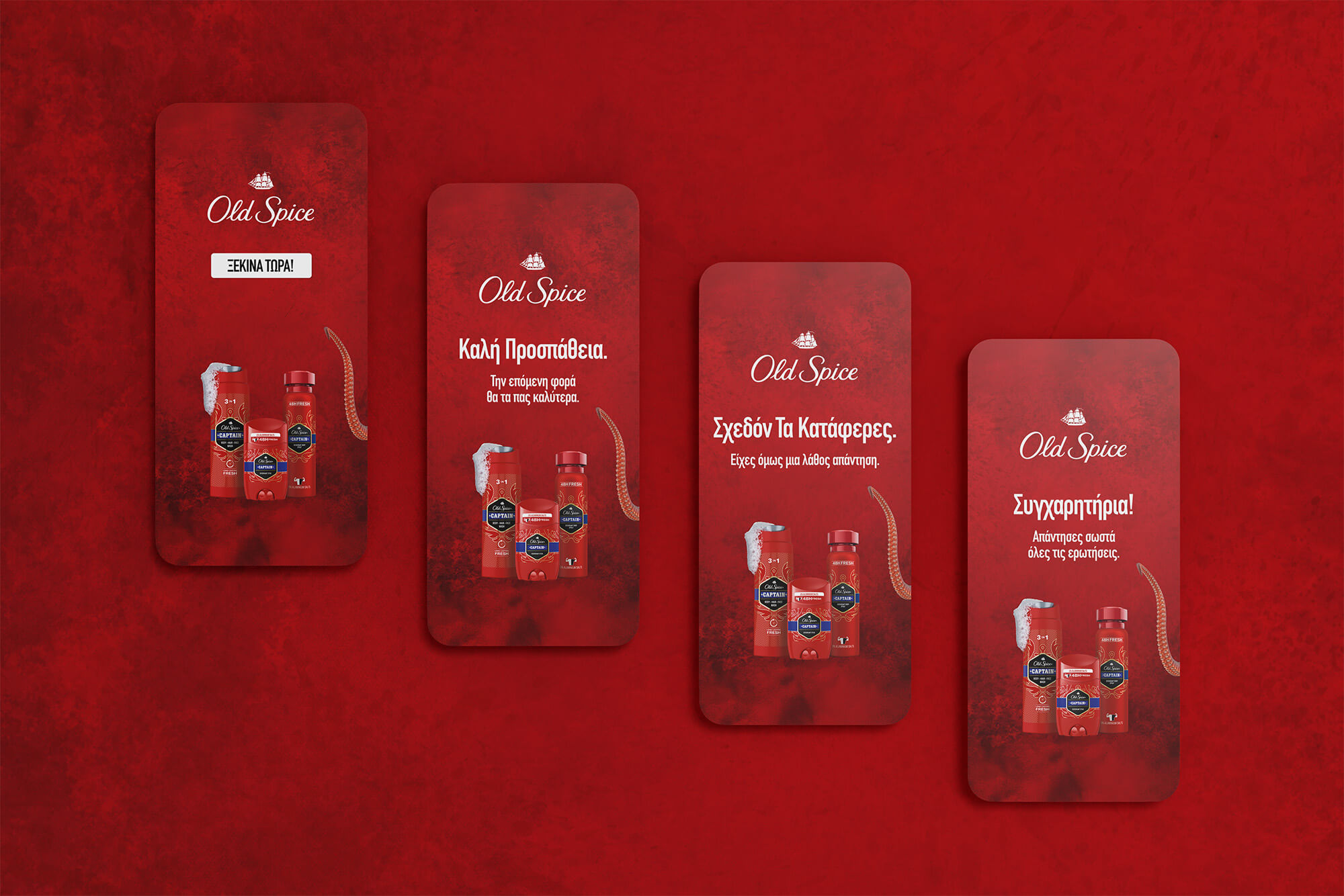
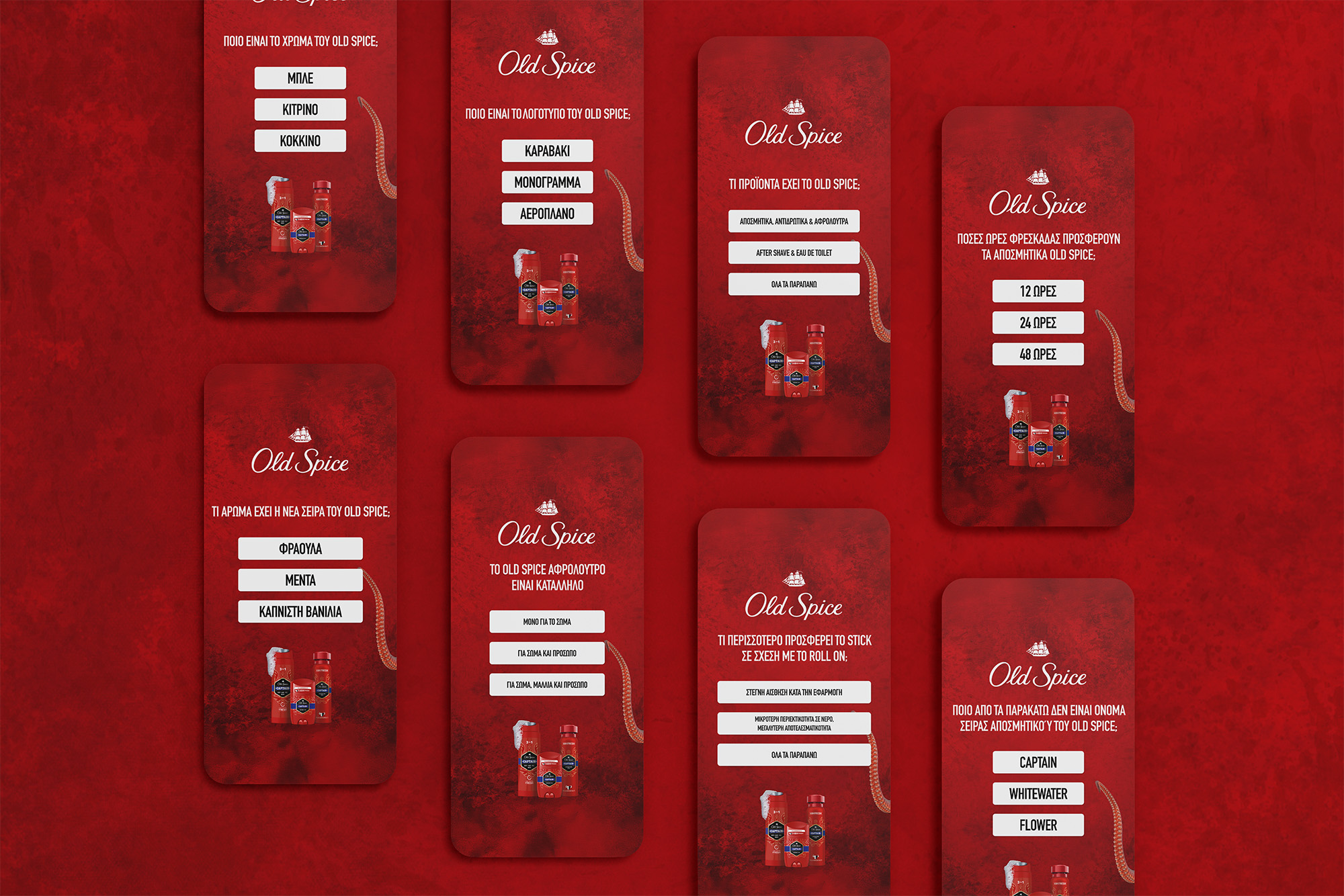
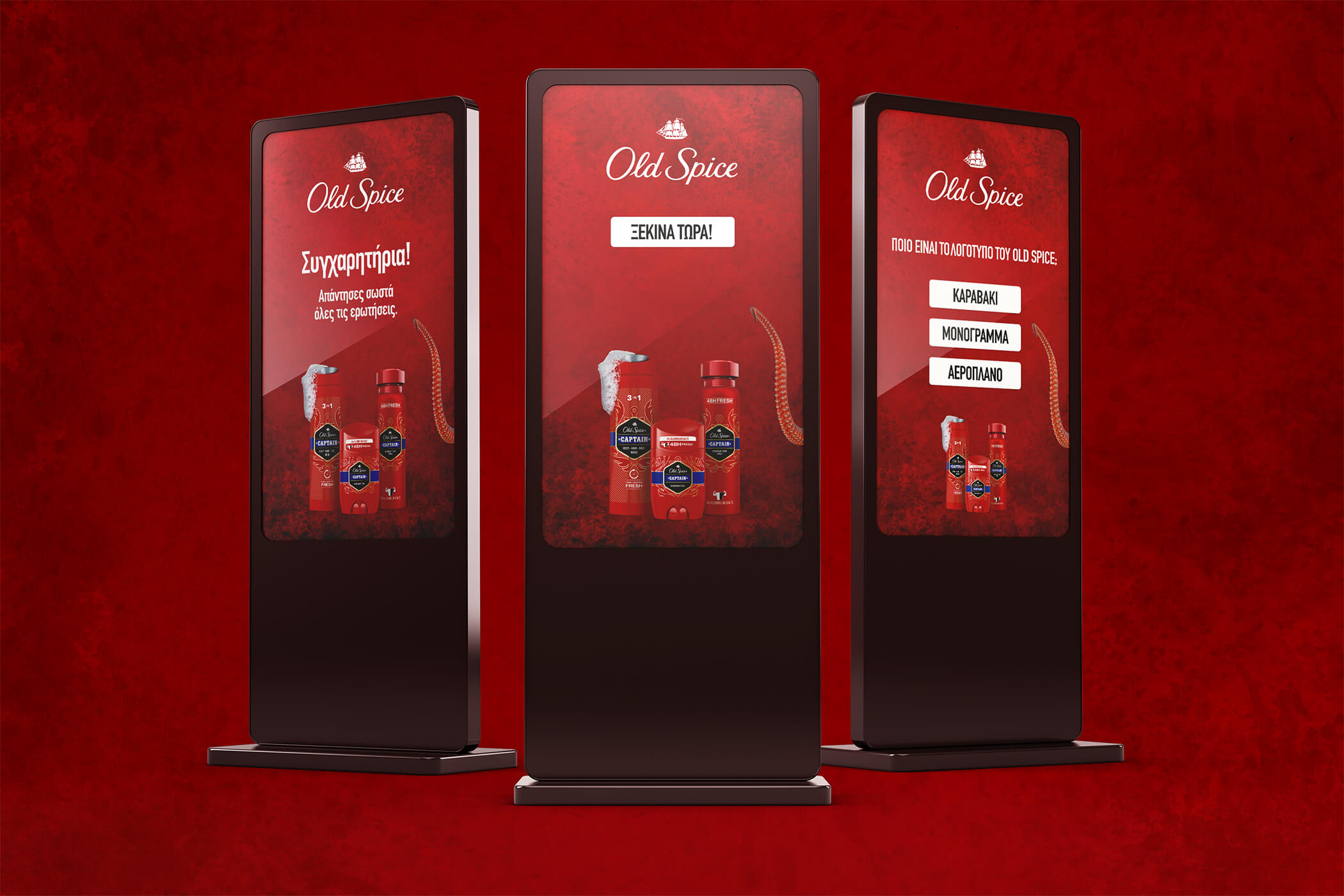

The project delivered a retail experience that combined entertainment and utility in equal measure. Customers interacted willingly because the game was quick, humorous, and visually appealing. This increased dwell time in store, strengthened brand recall, and encouraged shoppers to explore surrounding promotional displays.
From a marketing perspective, the kiosk provided a structured route for capturing data such as emails and contact details, creating opportunities for retargeting and follow-up campaigns. Retail staff reported strong engagement, and the client received positive feedback about the clarity of the flow and the strength of the visual design.
Most importantly, the project demonstrated how UI/UX thinking, prototyping, and thoughtful art direction can turn a simple retail touchpoint into a measurable engagement tool. By using gamification and interactive media, the experience encouraged customers to connect with the brand on their own terms, making the overall activation more impactful and significantly more memorable than traditional static POS displays.
